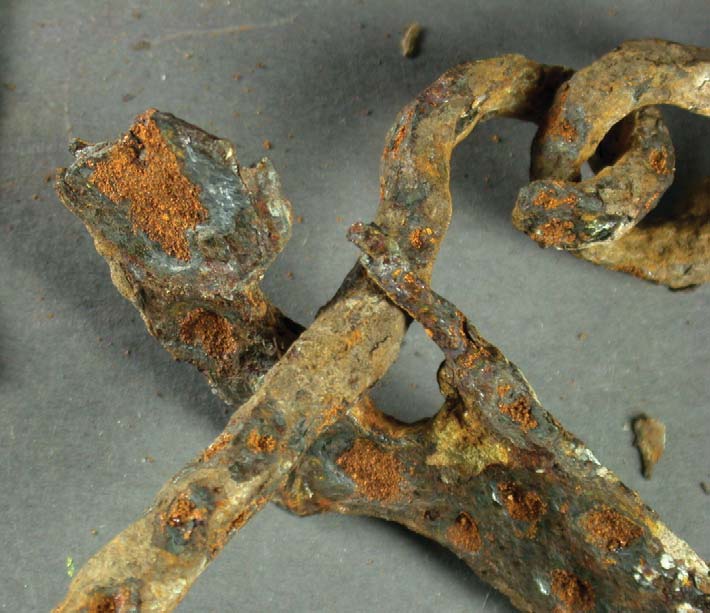ACTIVE CORROSION OF MUSEUM METAL OBJECTS AND ITS DIAGNOSING
DOI:
https://doi.org/10.24852/2587-6112.2021.6.242.253Keywords:
archaeological metal, museum object, metal restoration, metal corrosion, active corrosion, active corrosion testingAbstract
The term "active corrosion" is widely used to characterize the condition of archaeological metal objects, but there is still no clear definition of this concept either in Russian or foreign special literature. The authors of the paper offer their definition of active corrosion of museum metal objects, describe the causes for its occurrence and the necessary conditions for its development. The paper discusses the concept of active corrosion of museum objects made of iron, copper alloys and lead, describes its diagnostic properties and suggests various methods for its detection and testing. An emphasis is made on active corrosion of archaeological objects.
References
Буршнева С.Г., Кузнецова О.Б., Смирнова Н.В. Исследование и тестирование метода стабилизации железных археологических предметов с применением ультразвука // Проблемы реставрации памят¬ников культуры и искусства. Материалы III региональной науч.-практической конф., посвященной 15-летию Эрмитажной школы реставрации. Екатеринбург: Тезис, 2012. С. 139-146.
Калиш М.К. Естественные защитные плёнки на медных сплавах. М.: Металлургия, 1971. 200с.
Очерки по методике технологического исследования, реставрации и консервации древних металли¬ческих изделий / ИГАИМК. Вып. 130. М.-Л.: ОГИЗ, 1935. 121 с.
Скотт А. Очистка и реставрация музейных экспонатов. Пер. с англ. В.А. Фроловой и В.Е. Фарма- ковской / ИГАИМК. Вып. 114. М.-Л.: ОГИЗ, 1935. 72 с.
Шемаханская М.С., Металлы и вещи: история, свойства, разрушение, реставрация. М.: Индрик, 2015. 288 с.
Эванс Ю.Р., Коррозия и окисление металлов (теоретические основы и их практическое приложение). Пер. с англ. под ред. д-ра хим. Наук проф. И.Л. Розенфельда. М.: Гос. Науч.-тех. Изд-во машиностроительной лит-ры, 1962.,857 с.
Cronyn J.M. The Elements of Archaeological Conservation. London: Routledge, 1990. 326 p.
Knight B., The Stabilization of Archaeological Iron. Past, Present and Future // Metal 95: Proceedings of the International Conference on Metals Conservation. London: James & James (Science Publisher) Ltd, 1997. P. 36-40.
Recognizing Active Corrosion, Canadian Conservation Institute (CCI) Notes 9/1, 2007, https://www. canada.ca/en/conservation-institute/services/conservation-preservation-publications/canadian-conservation- institute-notes/recognizing-active-corrosion.html, 9/08/2020
North N.A., Corrosion Products on Marine Iron // Studies in Conservation 27, 1982. P. 75-83.
Odegaard, N., Carroll, S. and Zimmt, W S. Material Characterization Tests for Objects of Art and Archaeology. London: Archetype Publications Ltd, 2000. 242 p.
Loeper-Attia M.A., A Proposal to Describe Reactivated Corrosion of Archaeological Iron Objects / Corrosion of Metallic Heritage Artefacts. Investigation, Conservation and Prediction of Long Term Behaviour. European Federation of Corrosion (EFC) Series, 2007. P. 190-202.

Downloads
Published
How to Cite
Issue
Section
License
Copyright (c) 2021 Burshneva Svetlana G., Senatorova Olga Yu.

This work is licensed under a Creative Commons Attribution-NonCommercial 4.0 International License.







